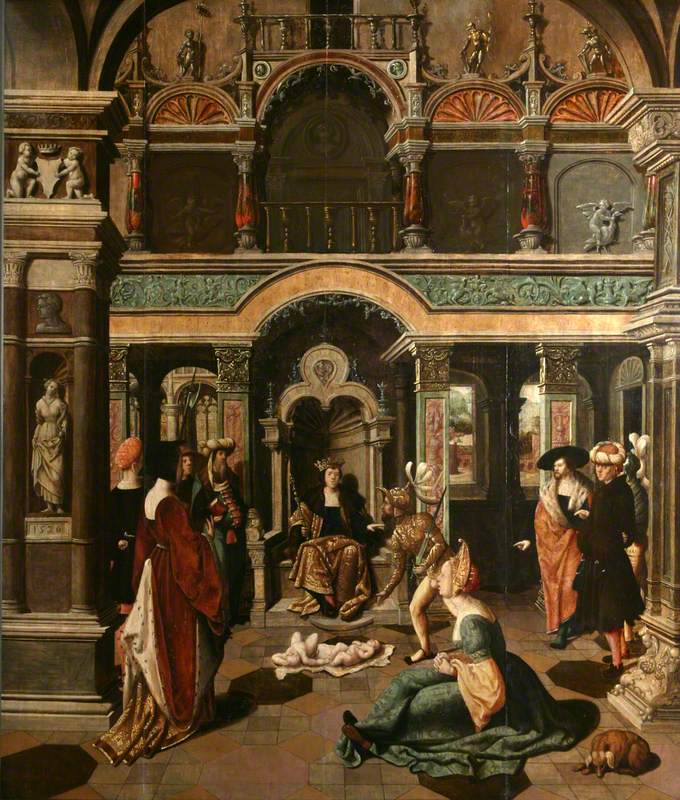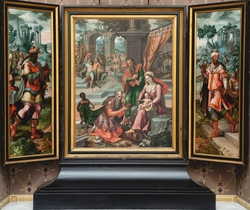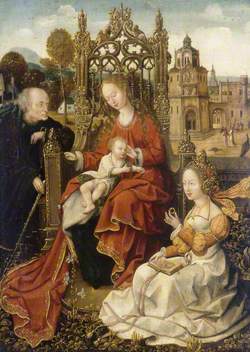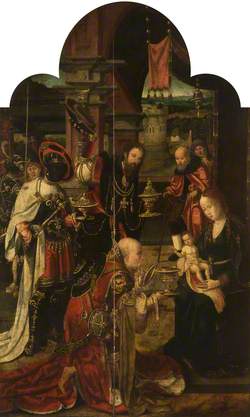How you can use this image
This image is available to be shared and re-used under the terms of the Creative Commons Attribution-NonCommercial-NoDerivatives licence (CC BY-NC-ND).
You can reproduce this image for non-commercial purposes and you are not able to change or modify it in any way.
Wherever you reproduce the image you must attribute the original creators (acknowledge the original artist(s) and the person/organisation that took the photograph of the work) and any other rights holders.
Review our guidance pages which explain how you can reuse images, how to credit an image and how to find more images in the public domain or with a Creative Commons licence available.
DownloadNotes
Add or edit a note on this artwork that only you can see. You can find notes again by going to the ‘Notes’ section of your account.
A scene frequently depicted as an example of the biblical king's wisdom. Two women had given birth at the same time but one of their children had died; each claimed to be the mother of the living child. Solomon ordered the child to be cut in two and shared between them, knowing the real mother would renounce her claim so that its life would be spared. The king is seated in the centre of the composition on an elaborate throne situated under an archway within a highly ornate, colonnaded hall. On the ground before him lie two babies on a blanket. To the right, an armoured soldier with a crested helmet and carrying a sword steps forward, towards Solomon, and gestures at the babies. Behind him is a group of courtiers, including a man wearing a large, wide-brimmed hat and a cloak with a fur collar, and another figure with a hat resembling a turban.
Title
The Judgement of Solomon
Date
1526
Medium
oil on panel
Measurements
H 110.2 x W 95.3 cm
Accession number
1960.331
Acquisition method
purchased from the Arcade Gallery, 1960
Work type
Painting
Inscription description
Dated, base of sculpture niche at lower left edge: 1526 On upper frieze, painted in black then gilded, mostly worn: on left: APOCALUPSIS ?IZ . E??VROV . O on right: APOC . 17 . EN . ROET . ??HA and also: ANNO 1526






